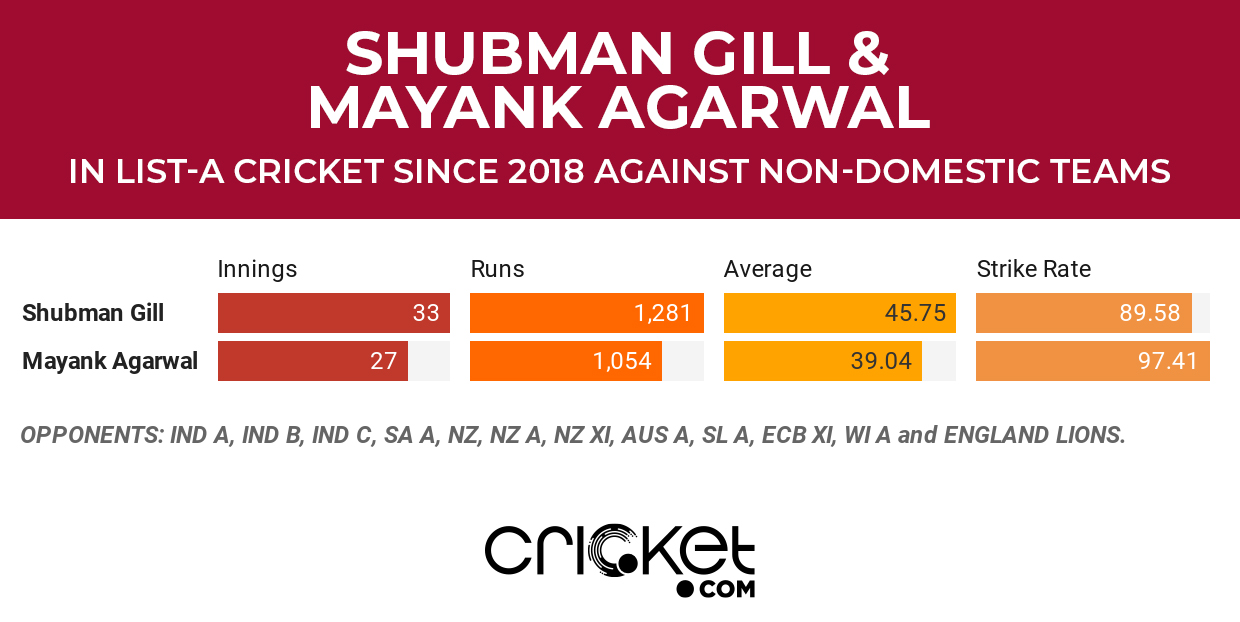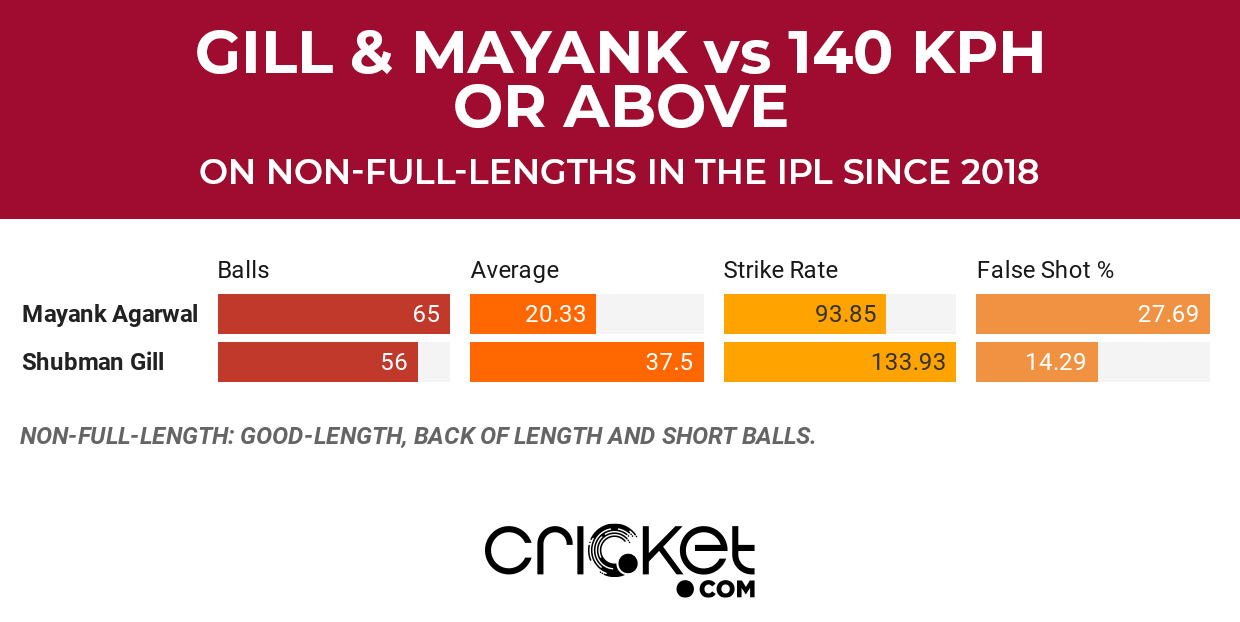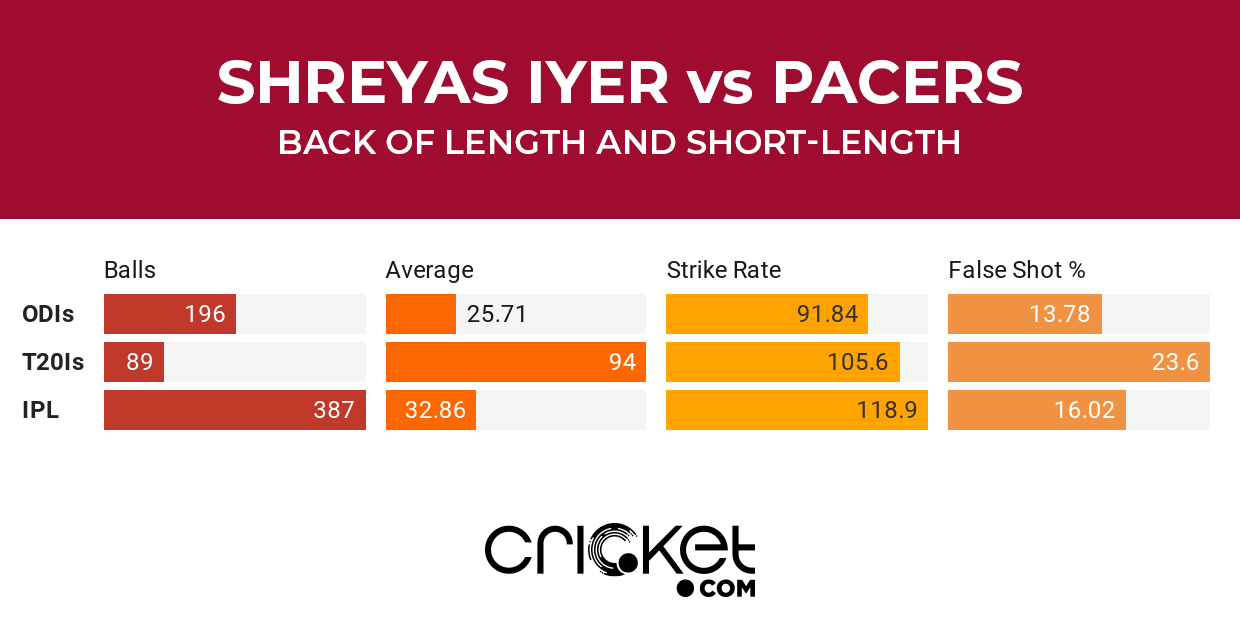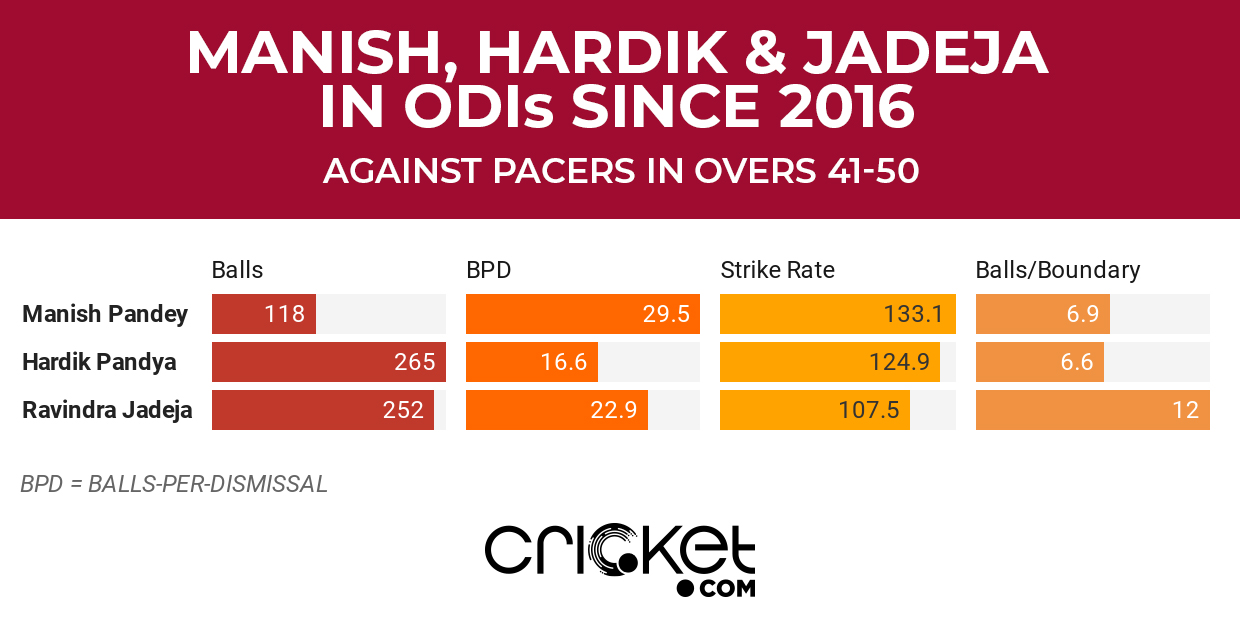 OPINION
OPINIONIndia's first series under 'ODI Super League' commences from 27 November against Australia. Here is a discussion on the key points from the Indian team perspective.
Who opens with Shikhar Dhawan?
India have been a bit weird regarding the selection of openers in ODIs. Mayank Agarwal and Prithvi Shaw opened in New Zealand when Rohit Sharma and Dhawan were injured in February 2020. Both openers didn’t have a great series. For the following ODIs against South Africa, Shubman Gill was brought in for Agarwal. The series didn’t take place and now Agarwal is brought back for Shaw.
There were rumours Gill could open against South Africa, however, now a great IPL season for Mayank has made his case stronger.
Agarwal has piled up a lot runs in List A cricket as well. In 41 List A innings since 2018, he averaged about 57 with a strike rate of over 105. Gill, at the starting stage of his career, has been good too. In 49 List A innings since 2018, Gill averaged about 47 with a strike rate of 90.
However, against non-domestic teams, Gill has better numbers and a bigger sample size too.

Gill is also comparatively better against high pace. The tall Australian pacers will test the batsmen by high pace and back-of-length bowling. In the IPL since 2018, Gill has better numbers than Agarwal against non-full-length bowling bowled at 140 kph or above.

Even though the numbers are from the IPL, they do tell a thing or two about their ability.
Both haven’t played List A cricket in Australia. Mayank is in form, and has scored in List A cricket and succeeded in Test cricket in Australia. Gill has different gears against spin and has a good base against pace as well. India can choose either, but they should give a long run to the selected personnel.
Can Shreyas Iyer come good?
In his short ODI career so far, Shreyas has been quite good. However, he doesn’t have a great history with Australia. His runs-per-innings ratio of 18.33 (in three ODIs) against Australia is the worst as compared to other opponents. In 2016, Iyer played five List A games in Australia and averaged 33 with a strike rate of less than 70.
Iyer has issues against high-pace bowling. Expecting short balls into his body, he moves back and across in the crease and tries to create the room to hit in the offside. Iyer moves a bit too much and doesn’t look comfortable. Also, hanging back for a majority of deliveries, makes his work tougher against full and good-length deliveries.

The huge boundaries of the Australian grounds will also make Iyer’s work tougher. If the Aussie pacers get their planning and execution spot on, Iyer has a big challenge ahead.
Who forms the lower middle-order of India?
If Hardik Pandya is fit to bowl and India entrust him to bowl 10 overs (which India have done in the past), he might play at No. 7 with KL Rahul and Manish Pandey at No. 5 and No. 6 respectively. Rahul has done well at No. 5 while Pandey hasn’t got enough opportunities. Despite debuting in 2015 and being in India’s plans for quite some time, Pandey has batted in just 21 ODI innings.
Pandey is a skilled player of fast-bowling and India can have him if they need the extra batting depth. Hardik can be promoted ahead of Pandey if needed.
It is understandable if India don’t trust Jadeja, despite his improvement, for the finishing role. In 18 ODI innings in Australia, Jadeja averages 16.61 with a strike rate of about 81. Facing 267 balls, he has a balls-per-boundary ratio of over 19 and is yet to hit a six.

However, if Pandya doesn’t bowl, he will bat at No. 6 and Jadeja at No. 7. India can also go with the same combination even if Hardik bowls – to not take a risk straight-away. It will also give India six bowling options. Also, if India play seven batsmen including Hardik, at least one batsman is likely to be underused unless there is a collapse. This combination also sounds better on paper.
Will Saini make his case stronger?
Considering Jadeja plays at No. 7 and Bumrah, Shami & Chahal are locked as pure bowlers, India will pick one more bowler. It will be one among Kuldeep, Saini and Shardul.
Saini doesn’t have great numbers in his short ODI career of five matches. However, his economy of 6.27 is still better than that of Thakur (7). Also, Saini’s T20I numbers are better.
Since Kuldeep’s recent returns are not very great – and due to the presence of two spinners in the bowling attack – India should prefer Saini over Thakur.
Apart from the numbers, there is a clear difference in their skillsets. Saini can bowl yorkers, short balls and hit the deck hard. His pace is also good; however, the speedster needs to work on his tactics while bowling.
India might look to rotate Bumrah and Shami in the white-ball leg to keep them fresh for the Test series, thus, Saini’s responsibility is going to only increase.